Multi-Level Energy Management—Part II: Implementation and Validation
Abstract
:1. Introduction
2. Vehicle, Test Setup, and Implementation
2.1. Hybrid Electric Vehicle
- 10 ton, tractor only,
- 20 ton, tractor with light loaded, three-axle trailer,
- 40 ton, tractor with heavy loaded, three-axle trailer.
2.2. Test Track
- The variation in slope from −12% to 12% causes a large range of road loads, covering all EMS functionality.
- The slope changes faster than on public roads, causing a high dynamic road load for the EMS.
- At low speed more gear selections are viable (typically 5), opposed to high speed driving, where gear selection is often saturated in the highest gear. Low speed driving is thus a more extreme test scenario for the EMS.
- The low speed compared to typical highway applications causes non-typical fuel economy numbers. However, the same fuel-saving mechanisms are present, which are validated in this research. Representative fuel economy numbers are calculated in a high-fidelity simulation environment ([14], Section 7.3), using these validated models.
2.3. Energy Management System Implementation
Level 0: Component Control
Level 1: Power Split, Mode, Gear Control
Level 2: Battery Energy Control
Level 3: Power Prediction
Computational Load
3. Validation Level 3: Power Prediction
3.1. Repeatability
- The predicted speed of 24 km/h is not maintained in the downhill (−12%, −6%) sections, where speed increases towards 29 km/h. This is caused by the design of the speed control system on the truck: cruise control is not allowed to apply braking. The DSC function is allowed to control the braking system but has a higher speed setpoint (27 km/h, indicated by the red dashed line). Due to the change in speed setpoint, some potential energy is temporarily converted to kinetic energy instead of brake energy, which is best illustrated on the −12% slope: during acceleration the measured braking power is smaller than predicted, while during the deceleration to the cruise setpoint the increased kinetic energy is converted to brake energy again, shown by the larger measured, than predicted, braking power.
- The measured power demand in the flat segments (0%) is often higher than predicted, but highly reproducible. The increased demands coincide with the sharp turns in the track as shown in Figure 2. The lateral acceleration caused by the sharp turns, increase the longitudinal friction forces due to tire slip and increased steering angles [15], especially with the 3-axis trailer with non-steering axles. This effect is not modeled in the previewer, as it depends on parameters not known to the EMS, such as tire temperature, tire compound, and vehicle configuration.
- The measured speed shows overshoot and undershoot near the slope changes. The slope changes on the track are extreme compared to public roads: within 5 m the slope changes from 0% to 6% (or 12%) and vice versa, resulting in large transients in the road load. At the same time, mode changes are commanded, see Section 5, resulting in a brief period without traction due to the open driveline. The tuning of the speed controllers is less suited for these extreme conditions, resulting in overshoot and undershoot behavior.
3.2. Parameter Variation
- On the downhill sections, speed cannot be maintained for the 40 ton combination. On the −6% slope, MG-only recuperation is sufficient to maintain speed for the 10 ton and 20 ton configuration. On the −12% all configurations accelerate; however, the 10 ton tractor can do without DSC activation, resulting in a better match with prediction at the end of the −12% slope.
- In the sharp turns, located in the flat segments, the measured power demand is higher than the prediction, for the configurations with a trailer. As the three-axle trailer has no steering, large friction forces cause a high road load, most noticeable for the 40 ton configuration. The solo trailer has no significant prediction error in the turns.
- Where the slope changes and, at the same time, modes are changing, speed controller overshoot and undershoot is most noticeable for the heavy configurations.
4. Validation Level 2: Battery Energy Control
Charge Sustenance
- Level 2 power-split control uses a simpler abstraction of the vehicle (i.e., a fixed average engine speed and no cost on switching, [14], Section 4.2) than Level 1 power-split control (using the actual engine speed and penalized switching, [14], Section 4.3), where the latter implements its control to the components, while Level 2 only has as output.
- The real power demand is occasionally higher than the predicted power demand, as shown in Section 3. Level 1 is then forced to select a mode with higher power capabilities, than the predicted mode (MG-only) can deliver.
5. Validation Level 1: Power-Split, Mode, Gear Control
- Base7: hybrid mode, with the power split and clutch mode controlled by a baseline, non-previewing, EMS. The gear is fixed in 7th.
- EMS7: hybrid mode, with the power split and clutch mode controlled by the Level 1 algorithm. The gear is fixed in 7th.
- EMSG: hybrid mode, with the power split, clutch mode and gear controlled by the Level 1 algorithm.
5.1. Power Split and Mode Selection (Base7)
5.2. Power Split and Mode Selection (EMS7)
5.3. Power Split, Mode and Gear Selection: (EMSG)
- The amount of open driveline events is larger than with mode changing only, resulting in larger speed deviations. On the vehicle it was not possible to switch gears and modes simultaneously. Both events result in an open driveline condition of approximately 1 s, in total 2 s without traction, leading to large speed deviations from the speed setpoint. As a consequence, the integral action of the speed controller results in overshoot in the power demand, which in turn forces mode changes that are not foreseen by the previewer.
- Optimal gear shifting causes operation closer to the boundaries of the component power capabilities, as lower rotational speeds result in lower losses, however, also result in a lower maximum power. As the operating points are closer to the boundaries, deviations in the power demand will force a mode change or shift when the boundary is exceeded. This happens near the −12% slope for MG-only (mode change), but also for the CE+MG in the +12% segment, forcing a downshift from 8 to 7.
- Change the gear shift penalty , dependent on the hybrid mode and road load, instead of one constant penalty for all conditions.
- Include the open driveline events in the control model, in order to correctly predict the speed, including overshoot and undershoot.
- Implement simultaneous mode and gear switching on Level 0, to reduce the open driveline time.
- Improve the speed controllers, to prevent short spikes in power demands.
5.4. Energy Consumption
- a higher power demand on the cycle than simulated, mainly caused by the un-modeled cornering effect. This results in much higher average power demands on the flat segment (25 kW instead of the predicted 9 kW), which results in a smaller energy benefit of selecting the optimal mode (MG-only instead of ICE-only).
- missing some brake energy on the −6% incline for the fixed gear EMS’s. A downshift is needed to use the maximum recuperation power of the MG.
- too many switching events, reducing the potential of EMSG.
6. Conclusions and Recommendations
6.1. Power Prediction
6.2. Battery Energy Control
6.3. Power Split, Mode and Gear Selection
6.4. Discussion
- Including un-modeled friction effects. In the tests, cornering with a trailer showed large disturbances in the power prediction. In situations such as low speed maneuvering in sharp corners, modeling this effect will reduce the power prediction error and will improve the fuel-efficient decisions of the EMS. In long-haul applications, sharp cornering has no significant relevance in the energy consumption, and this effect can be neglected, without loss of fuel efficiency.
- Prediction of the velocity. The presented EMS uses a simple model of the environment, assuming that the vehicle can always drive its intended velocity. The environment however can force the vehicle to deviate from its intended velocity, e.g., by front runners, traffic lights, crossings, or heavy traffic ahead. Information that describes the environment better, can improve the estimation, e.g., from a radar system that tracks the front runner, or from online connected systems that inform the vehicle of heavy traffic ahead. That information can be used to improve the prediction on Level 3. The lower level algorithms automatically take the improved information into account, by the respective predicted velocity and power demand, with no further alterations in the algorithm needed. Future work is aimed at improving the Level 3 power and speed prediction, by including those additional information sources.
Author Contributions
Funding
Acknowledgments
Conflicts of Interest
References
- Sciarretta, A. A control benchmark on the energy management of a plug-in hybrid electric vehicle. Control Eng. Pract. 2013, 29, 287–298. [Google Scholar] [CrossRef]
- Delprat, S.; Guerra, T.M.; Rimaux, J. Optimal control of a parallel powertrain: From global optimization to real time control strategy. In Proceedings of the IEEE Vehicular Technology Conference, Vancouver, BC, Canada, 24–28 September 2002. [Google Scholar]
- Ambühl, D.; Guzzella, L. Predictive Reference Signal Generator for Hybrid Electric Vehicles. IEEE Trans. Veh. Technol. 2009, 58, 4730–4740. [Google Scholar] [CrossRef]
- Hellström, E.; Åslund, J.; Nielsen, L. Management of Kinetic and Electric Energy in Heavy Trucks. SAE Int. J. Engines 2010, 3. [Google Scholar] [CrossRef]
- van Reeven, V.; Huisman, R.; Pesgens, M.; Koffrie, R. Energy Management Control Concepts with Preview for Hybrid Commercial Vehicles. In Proceedings of the 6th International Conference on Continuously Variable and Hybrid Transmissions, Maastricht, The Netherlands, 17–19 November 2010. [Google Scholar]
- Merz, F.; Sciarretta, A.; Dabadie, J.C.; Serrao, L. On the optimal thermal management of hybrid-electric vehicles with heat recovery sytems. Oil Gas Sci. Technol. 2012, 67, 601–612. [Google Scholar] [CrossRef]
- Serrao, L. A Comparative Analysis of Energy Management Strategies for Hybrid Electric Vehicles. Ph.D. Thesis, The Ohio State University, Columbus, OH, USA, 2009. [Google Scholar]
- Nüesch, T.; Elbert, P.; Flankl, M.; Onder, C.; Guzzella, L. Convex optimization for the energy management of hybrid electric vehicles considering engine start and gearshift costs. Energies 2014, 7, 834–856. [Google Scholar] [CrossRef]
- Ngo, V.; Hofman, T.; Steinbuch, M.; Serrarens, A. An optimal control-based algorithm for Hybrid Electric Vehicle using preview route information. In Proceedings of the American Control Conference, Baltimore, MD, USA, 30 June–2 July 2010; pp. 5818–5823. [Google Scholar]
- Kermani, S.; Trigui, R.; Delprat, S.; Jeanneret, B.; Guerra, T.M. PHIL implementation of energy management optimization for a parallel HEV on a predefined route. IEEE Trans. Veh. Technol. 2011, 60, 782–792. [Google Scholar] [CrossRef]
- Elbert, P. Noncausal and Causal Optimization Strategies for Hybrid Electric Vehicles. Ph.D. Thesis, ETH Zurich, Zurich, Switzerland, 2013. [Google Scholar]
- Van Keulen, T.; van Mullem, D.; de Jager, B.; Kessels, J.; Steinbuch, M. Design, implementation, and experimental validation of optimal power split control for hybrid electric trucks. Control Eng. Pract. 2012, 20, 547–558. [Google Scholar] [CrossRef]
- Back, M. Pradiktive Antriebsregelung zUm Energieoptimalen Betrieb von Hybridfahrzeugen. Ph.D. Thesis, Universitat Fridericiana Karlsruhe, Karlsruhe, Germany, 2005. [Google Scholar]
- Van Reeven, V.; Hofman, T. Multi-level energy management for hybrid electric vehicles—Part I. Vehicles 2018, in press. [Google Scholar]
- Pacejka, H.B. Tire and Vehicle Dynamics; Elsevier: Amsterdam, The Netherlands, 2012. [Google Scholar]
- van Keulen, T.; de Jager, B.; Kessels, J.; Steinbuch, M. Energy Management in Hybrid Electric Vehicles: Benefit of Prediction. In Proceedings of the IFAC Advances in Automotive Control, Munich, Germany, 12–14 July 2010. [Google Scholar]
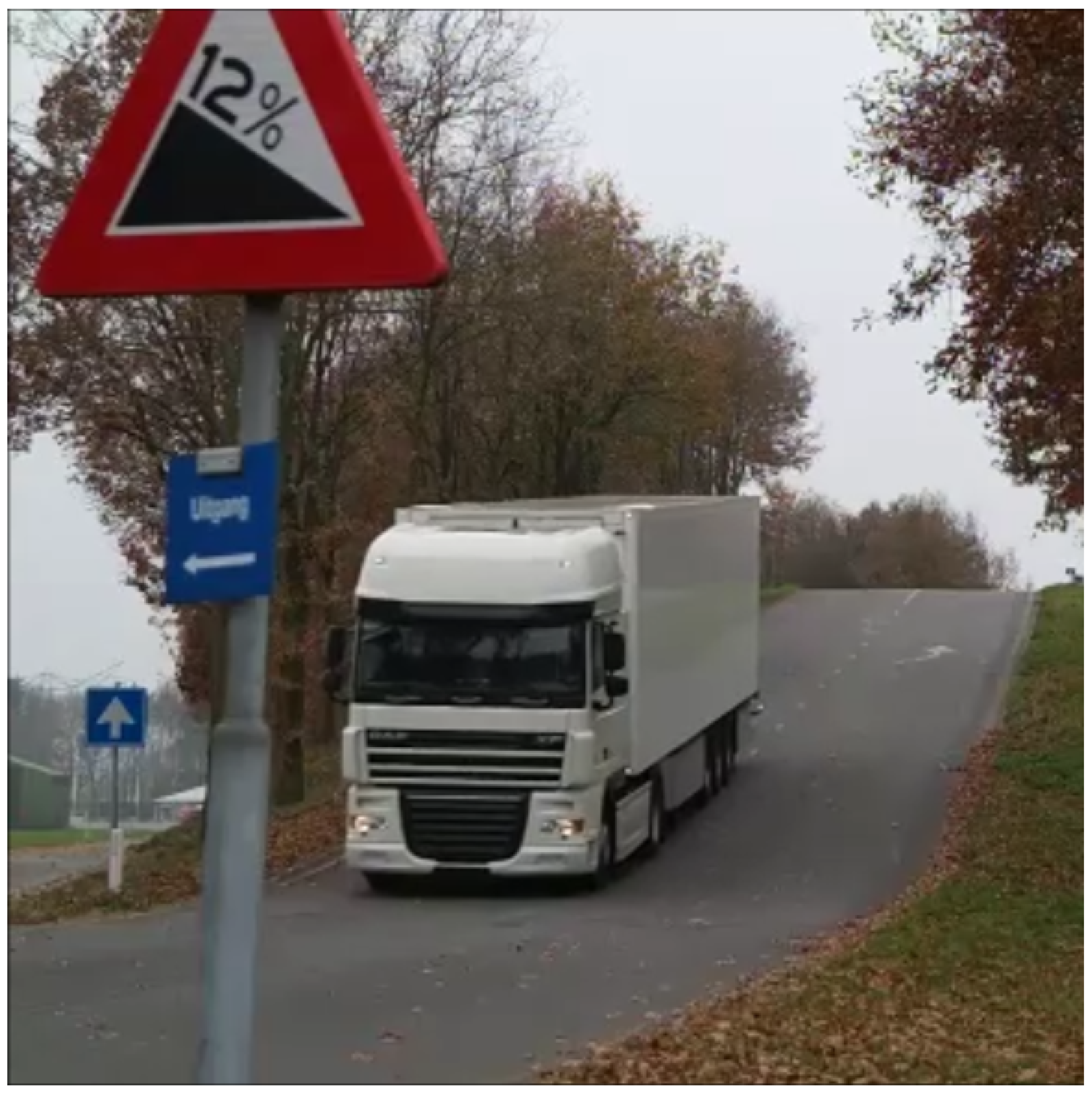
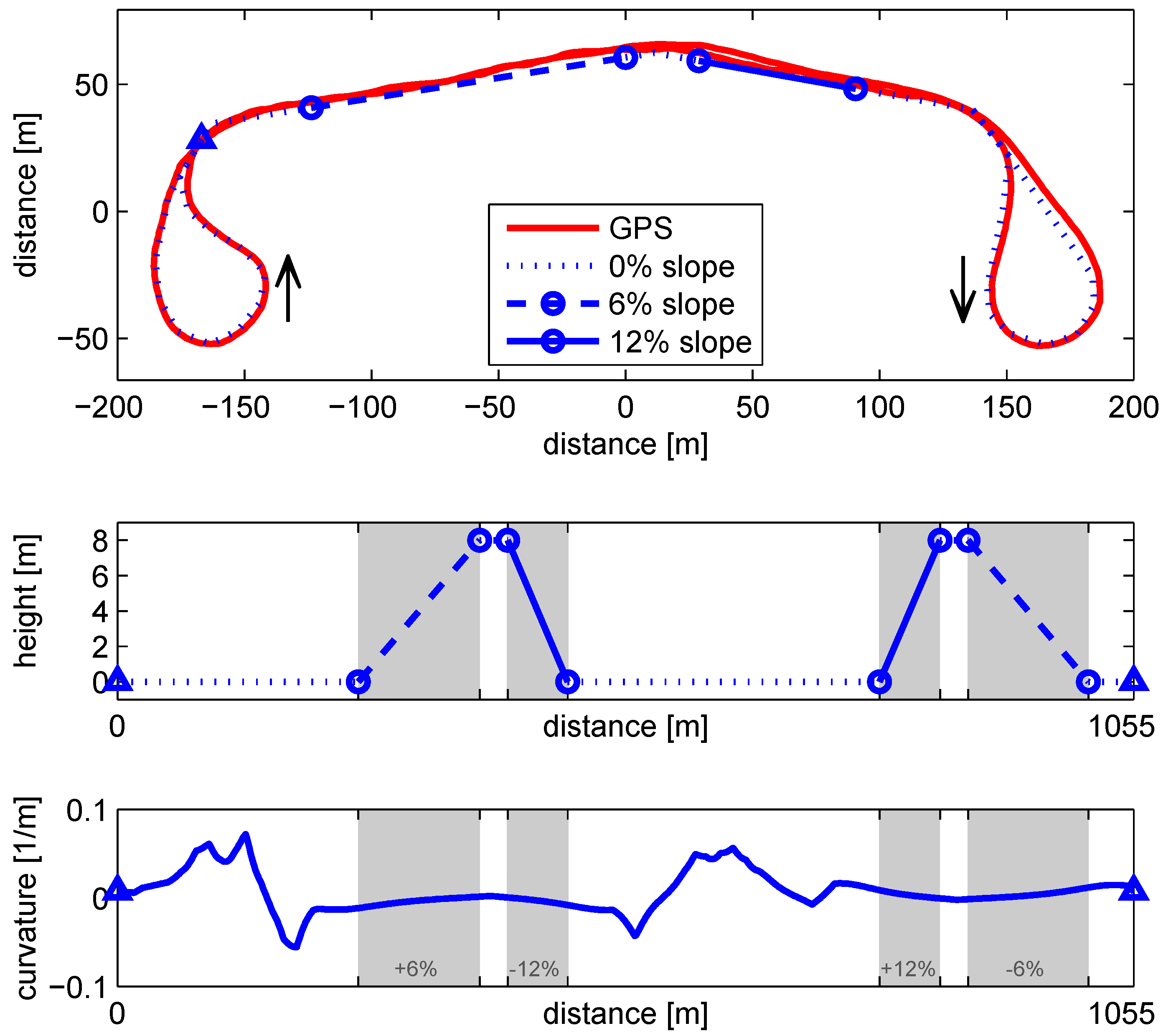
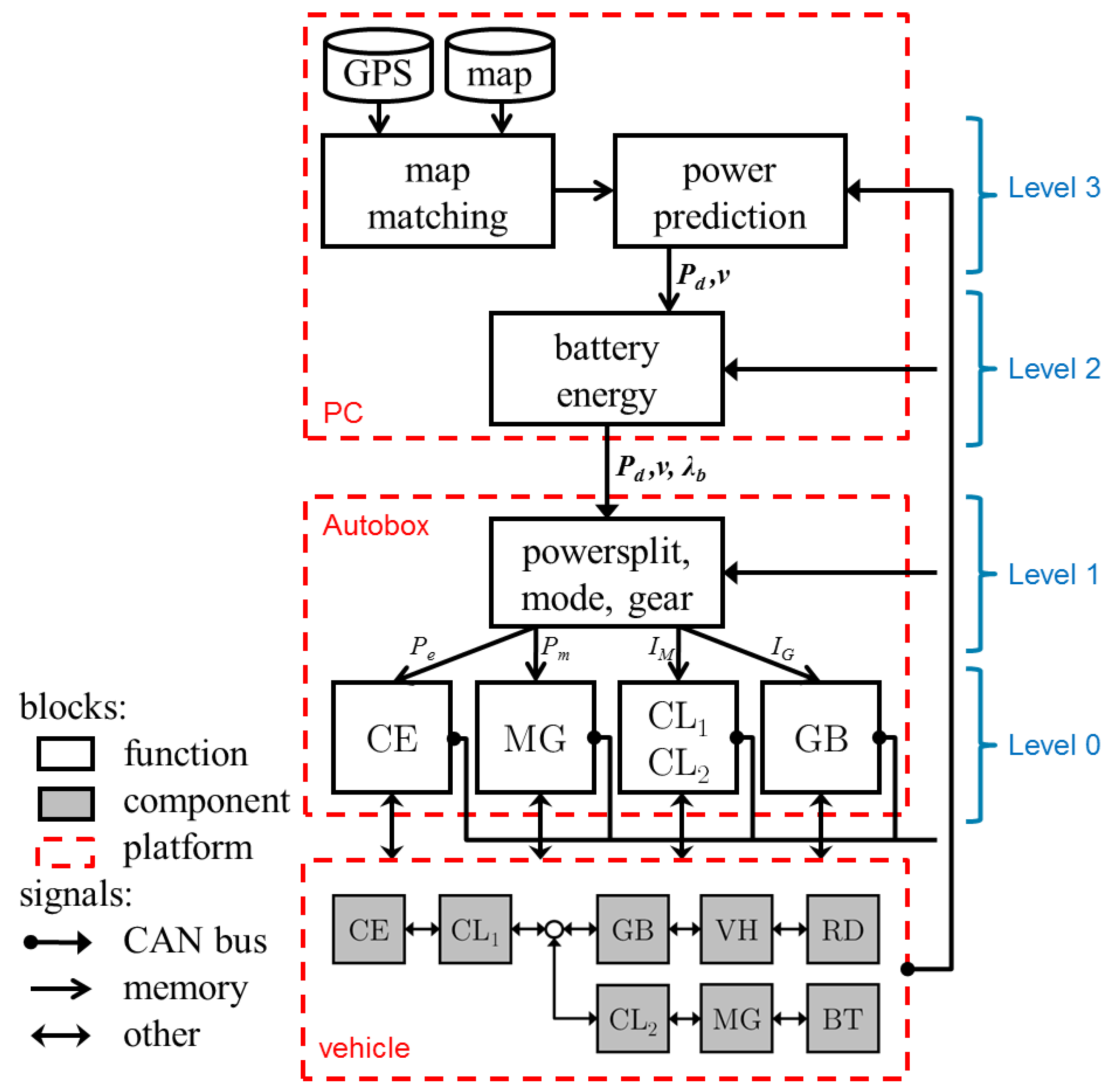
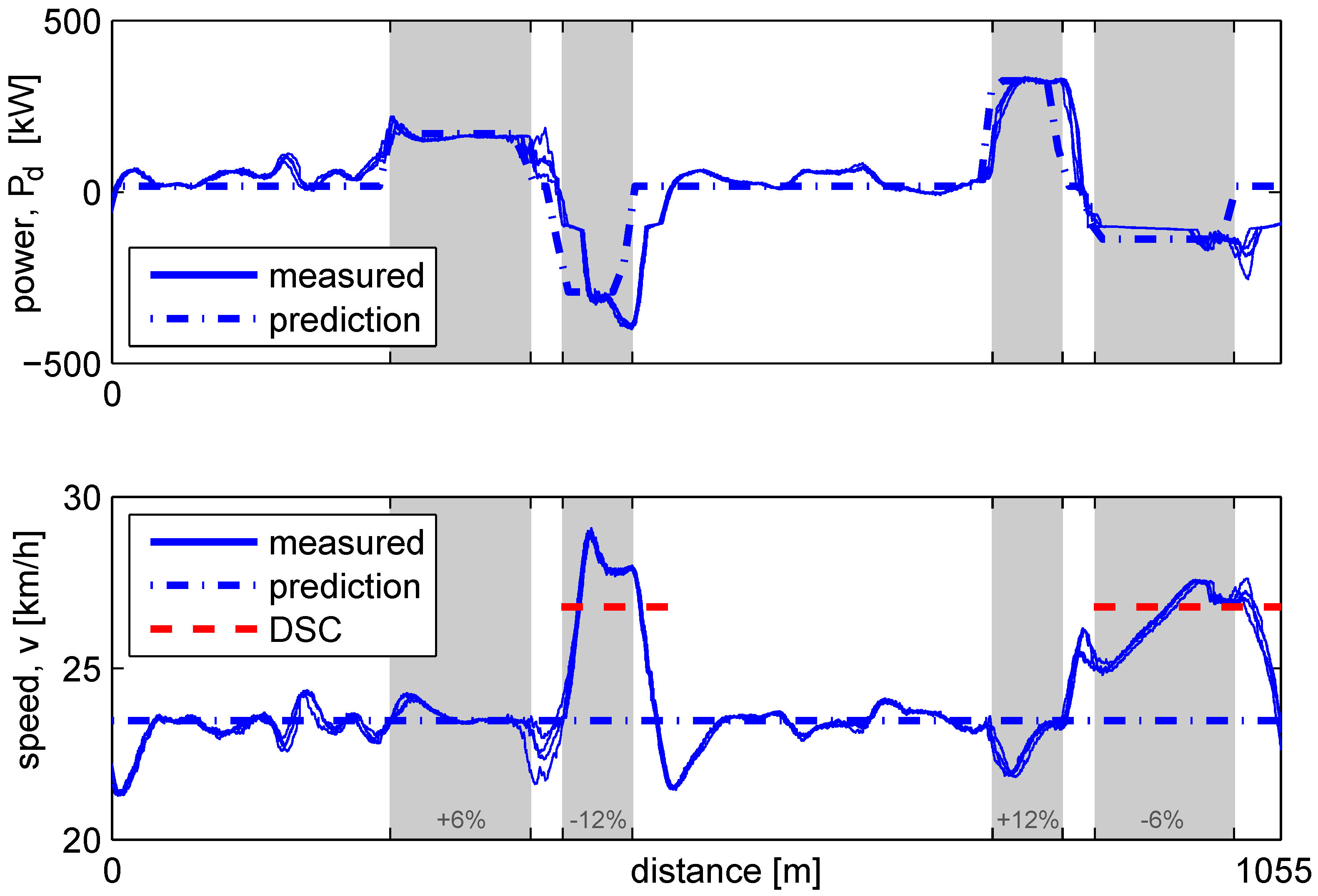
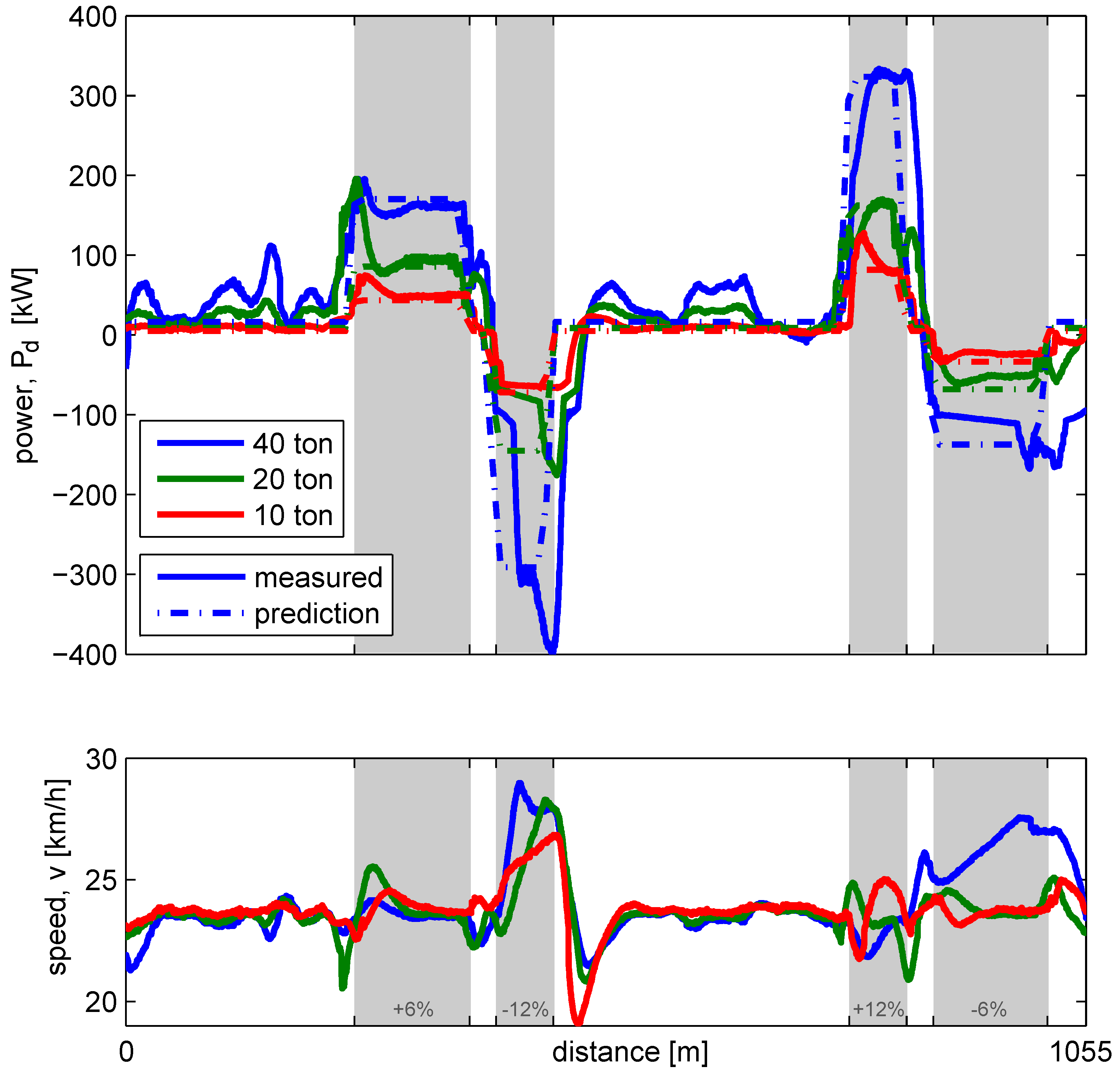
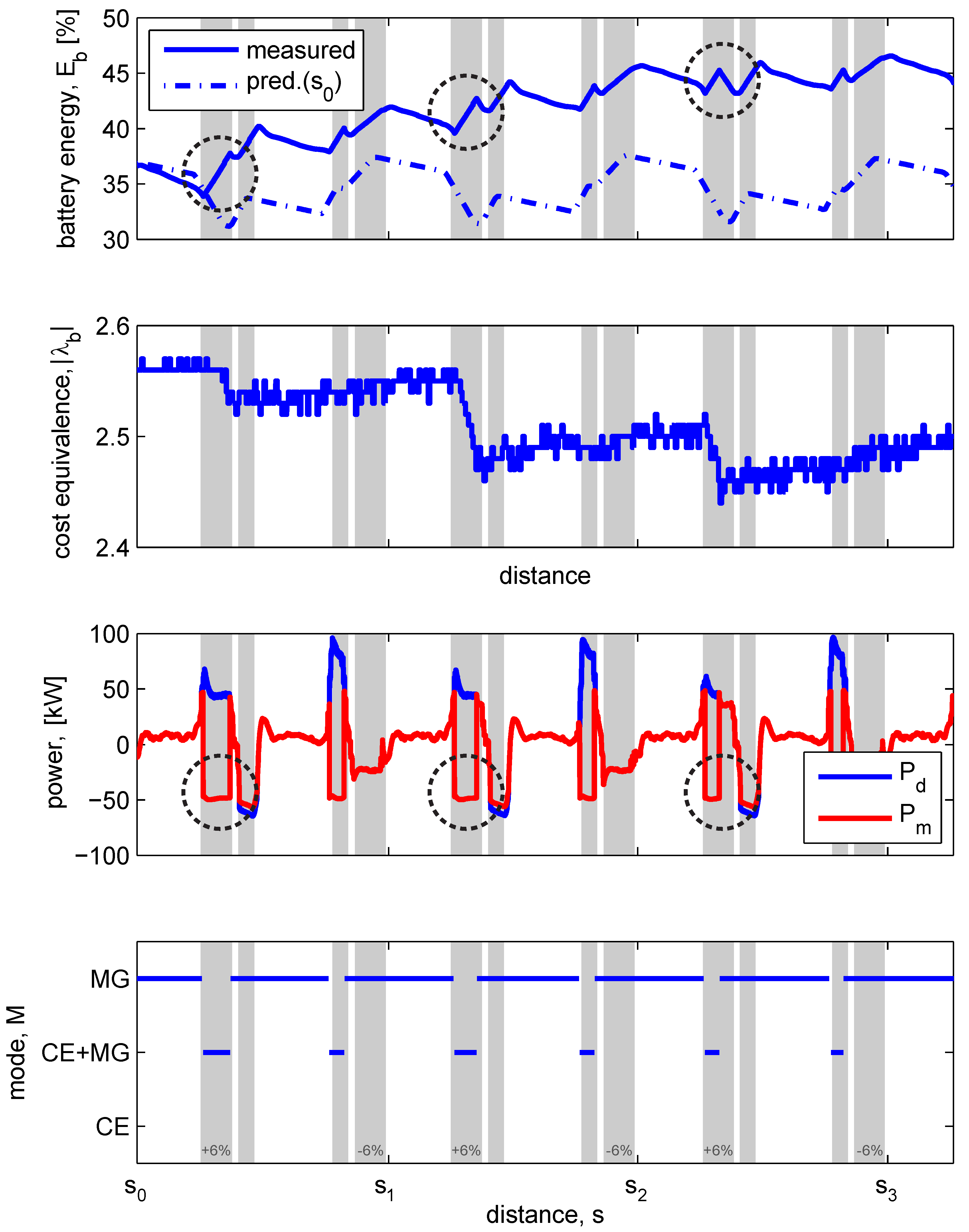
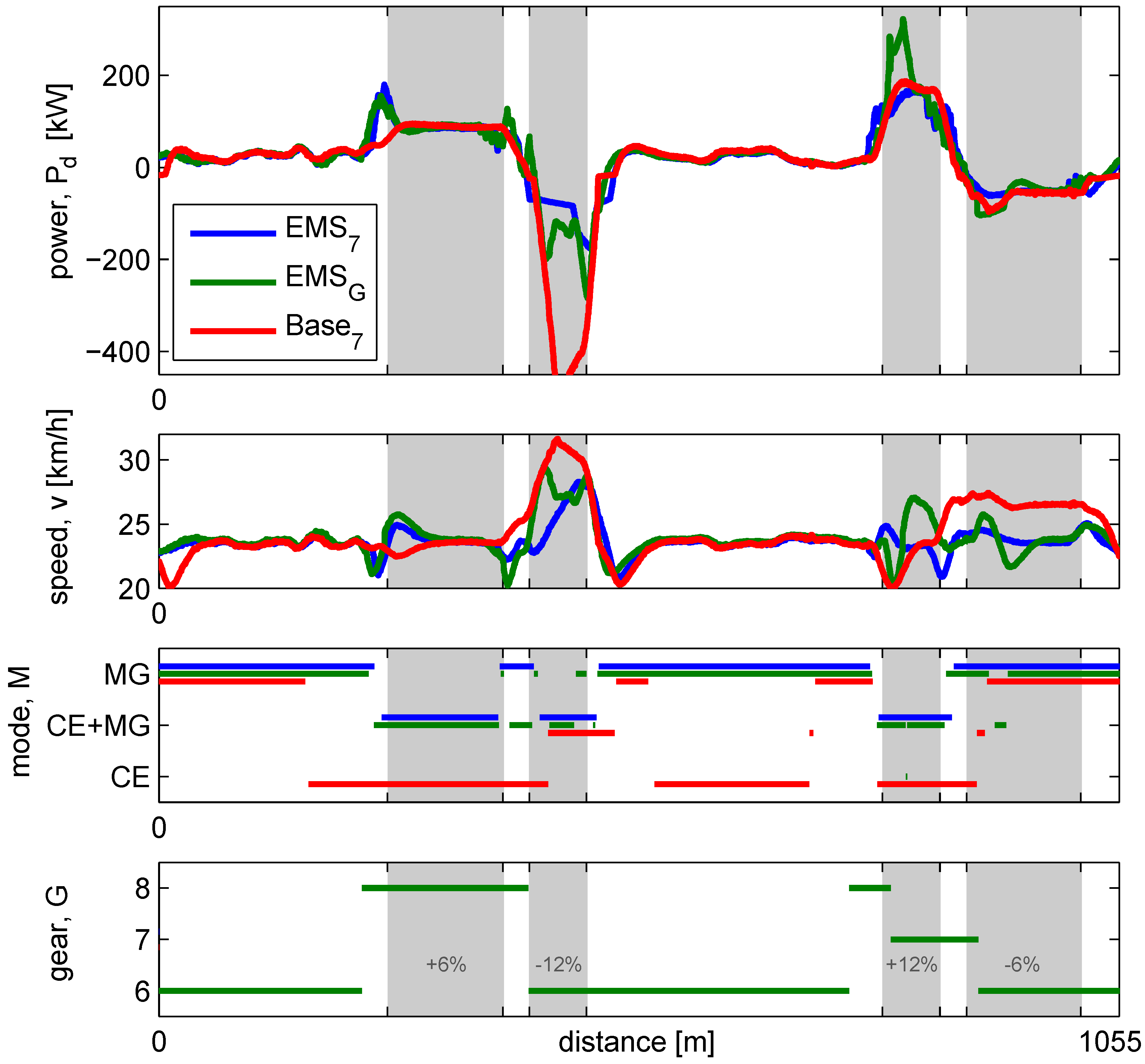
| MAE | mass [ton] | ||
|---|---|---|---|
| 40 | 20 | 10 | |
| power prediction [kW] | 50 | 27 | 11 |
| velocity prediction [km/h] | 1 | 0.6 | 0.5 |
| Cycle | ΔEb [%] |
|---|---|
| 5.7 | |
| 3.8 | |
| 0.7 |
| EMS | J [MJ] | ΔJ [%] |
|---|---|---|
| non-hybrid | 18.4 | 0 |
| Base7 | 14.0 | 24 |
| EMS7 | 11.9 | 36 |
| EMSG | 12.3 | 34 |
© 2019 by the authors. Licensee MDPI, Basel, Switzerland. This article is an open access article distributed under the terms and conditions of the Creative Commons Attribution (CC BY) license (http://creativecommons.org/licenses/by/4.0/).
Share and Cite
van Reeven, V.; Hofman, T. Multi-Level Energy Management—Part II: Implementation and Validation. Vehicles 2019, 1, 41-56. https://doi.org/10.3390/vehicles1010003
van Reeven V, Hofman T. Multi-Level Energy Management—Part II: Implementation and Validation. Vehicles. 2019; 1(1):41-56. https://doi.org/10.3390/vehicles1010003
Chicago/Turabian Stylevan Reeven, Vital, and Theo Hofman. 2019. "Multi-Level Energy Management—Part II: Implementation and Validation" Vehicles 1, no. 1: 41-56. https://doi.org/10.3390/vehicles1010003
APA Stylevan Reeven, V., & Hofman, T. (2019). Multi-Level Energy Management—Part II: Implementation and Validation. Vehicles, 1(1), 41-56. https://doi.org/10.3390/vehicles1010003






